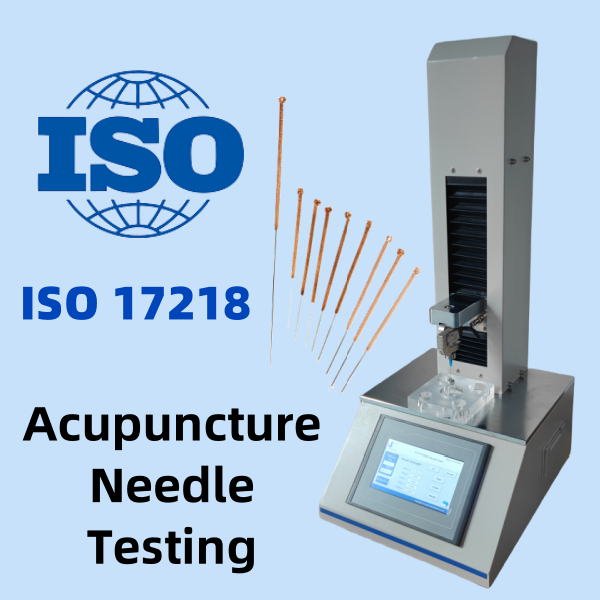ISO 17218
Acupuncture Needle Testing
ISO 17218 plays a crucial role in ensuring the safety and quality of acupuncture needles. As a trusted international standard, it defines test methods and requirements for needle intensity testing, needle sharpness testing, and needle puncture testing. This article aims to explain ISO 17218’s key elements and offer practical insights for manufacturers and quality control personnel. Cell Instruments, a leader in testing equipment, stands ready to support businesses in meeting ISO 17218’s requirements and achieving reliable testing results.
What is ISO 17218?
ISO 17218, titled “Sterile acupuncture needles for single use”, outlines standardized methods for evaluating acupuncture needles. Its main purpose is to ensure that needles are safe, effective, and reliable during clinical use. The standard includes guidelines for testing needle intensity, needle sharpness, a needle puncture performance to confirm that the needles meet global quality standards.
Acupuncture Needle Testing Explained
The standard specifies methods for three essential testing aspects:
1. Needle Intensity Testing
Needle intensity measures a needle tip’s ability to resist bending or breakage. In ISO 17218, this involves placing the acupuncture needle vertically against a steel block. The force is gradually increased until it meets the numerical criteria in section 5.3.5.2. After holding the load for (5 to 10) seconds, the needle tip is inspected under 5x magnification. The needle must remain straight, with no bending or hooking, ensuring that it won’t deform during actual acupuncture treatments.
2. Needle Sharpness Testing
Sharpness testing assesses the force needed for the needle tip to pierce aluminium foil. After intensity testing, the same acupuncture needle remains fixed in the apparatus. The needle is then pressed against the aluminium foil until it pierces it. The apparatus automatically records the piercing force, providing quantitative data on the needle’s sharpness. A properly sharp needle requires less force to penetrate the foil, reflecting its smooth and precise puncture capability.
3. Needle Puncture Testing
Puncture testing evaluates how well a needle penetrates soft tissues or materials. ISO 17218 provides two methods:
- Qualitative Method (Method A): This uses a membrane of surgical rubber gloves (compliant with ISO 10282) stretched over a cup. The needle is pressed vertically into the membrane. If the dent is minimal and resistance is low, the needle is sharp. This method offers a quick, visual check for sharpness consistency.
- Quantitative Method (Method B): This uses a polymerized polyurethane film with a thickness of (0.35 ± 0.05) mm and a Shore Hardness of (85 ± 10) Shore A. The needle is moved at 100 mm/min while the piercing force and displacement are recorded. The key force values F0F_0F0, F1F_1F1, a F2F_2F2 reflect the piercing and frictional characteristics of the needle. This method provides highly reliable data for assessing puncture performance and comparing different needles.
Best Practices for Complying with ISO 17218
Quality control and testing teams should carefully:
✅ Use standardized test apparatus to replicate ISO 17218’s conditions
✅ Record the test data accurately, including any changes in force during the puncture tests
✅ Compare results with those of known quality needles to benchmark performance
✅ Document and archive the test results for traceability and regulatory compliance
By following these practices, manufacturers and quality control personnel can confidently assess their acupuncture needles.
Contact Us Get ISO 17218 Testing Solution
O Cell Instruments, we specialize in designing and manufacturing testing equipment that complies with international standards like ISO 17218. Our instruments ensure precise needle intensity testing, needle sharpness testing, and needle puncture testing. We also provide custom testing solutions for special requirements, enabling you to meet evolving market demands with accuracy and reliability.
Whether you’re testing packaging, medical devices, or acupuncture needles, Cell Instruments has the expertise to help you maintain quality, safety, and compliance.

